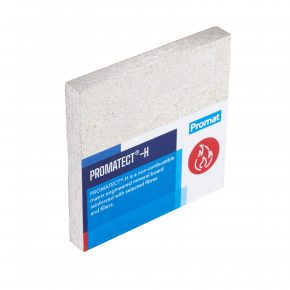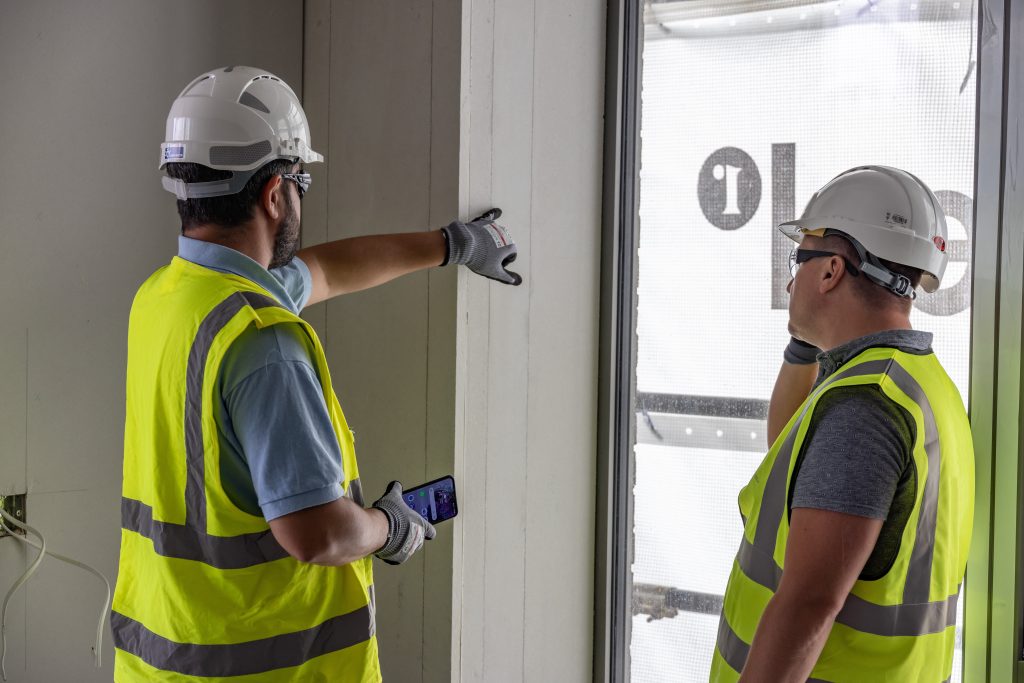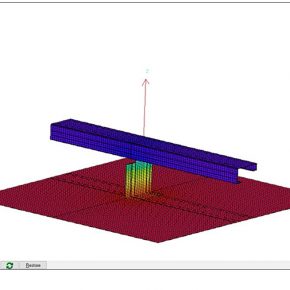
Promat: Maximising structural fire protection
Leading fire protection specialist, Promat, has launched PROMATECT®-H, a high-performance fire-resistant calcium silicate board tested to EN 13381-3: 2015. Find out more about it here…
A magnifying glass has been brought over the construction industry as a result of health and safety controversies, such as those found as part of the Grenfell Inquiry. But improving fire protection is far from just an external challenge, compartmentation firestopping and structural fire protection need to be at the forefront of everybody’s minds if we are serious about improving fire safety.
It is vitally important buildings are designed to allow for safe evacuation, and that fire and smoke cannot spread from one room to another. Crucial to this is ensuring buildings do not fall victim to premature failures, such as the wear and tear of materials used in construction.

Fire resistance in concrete structures
Concrete is a major component of many buildings constructed in the UK. While concrete does provide a degree of natural fire resistance, if exposed to fire concrete can experience both mechanical and chemical changes.
These changes include the potential for explosive spalling where excessive pressure within concrete – resulting from water evaporation and thermal expansion – causes it to crack and break into layers. This can expose reinforcing steel (rebar). Extreme heat over 260°C will cause rebar to lose its tensile strength, resulting in structural failure of reinforced concrete.
There are two main ways to increase the fire resistance of concrete structures: using coatings such as cementitious sprays – but these can be time consuming and messy to apply on site – or fire protection board.
An ideal solution for architects and specifiers
No matter which option is chosen to increase the fire resistance of concrete, it is essential to ensure the passive fire protection specified is fully-tested as part of a system at extreme temperatures to ensure superior fire resistance.
Promat‘s PROMATECT®-H is a high-performance fire-resistant calcium silicate board tested to EN 13381-3: 2015. It can protect concrete elements for up to 240 minutes making it the ideal solution for architects and specifiers. This means that the use of the board in a building will ensure that concrete columns, walls, beams, and slabs comply with all existing fire regulations and UK Building Regulations.
David Roulstone, Passive Fire Protection Product Manager at Promat, says: “Although many building materials have an element of natural resistance to fire, as architects and specifiers, it is crucial to minimise risk further.
“By using PROMATECT®-H you can comply with UK Building Regulations, increase reinforcing steel and concrete’s ability to with stand overheating, and most importantly, ensure you are maximising the time occupants have to exit a dangerous building in the event that a fire does occur.”
Ticking all the boxes
PROMATECT®-H offers architects, main contractors, sub-contractors, and other specifiers the option to upgrade structural elements. This offers a more flexible approach to internal fit outs or refurbishment projects as ceilings and partitions can also be easily created using Etex fire protection boards. As an added advantage, the boards also have a smooth surface to achieve a great finish with paints and standard joint fillers.
With a high resistance to water, PROMATECT®-H will not deteriorate when used in damp or humid conditions. This enables the board to be installed and left semi-exposed so it can be brought into the construction schedule at an early stage, making the build process faster and helping to keep to project timelines.
At just 12mm or 25mm, PROMATECT®-H is slim and therefore has minimal impact on the overall dimensions of a building. Being available in two thicknesses also means that PROMATECT®-H covers the full range of applications and fire resistance requirements.
For more information on PROMATECT®-H boards and other Promat passive fire protection products, get in touch with the Promat team.
Latest news

26th July 2024
Enfield Speciality Doors completes world-class project for Atlas Copco HQ
A rundown office and warehouse building completely transformed into a modern headquarters for Atlas Copco has been fitted with more than 120 internal fire doors from Enfield Speciality Doors.
Posted in Access Control & Door Entry Systems, Articles, Building Industry News, Building Products & Structures, Building Systems, Case Studies, Doors, Interior Design & Construction, Interiors, Posts, Restoration & Refurbishment, Retrofit & Renovation, Security and Fire Protection, Sustainability & Energy Efficiency, Timber Buildings and Timber Products, Wooden products
26th July 2024
Abloy UK launches new white paper
Abloy UK, a leading provider of security and access control solutions, has launched a new white paper.
Posted in Access Control & Door Entry Systems, Architectural Ironmongery, Articles, Building Industry News, Building Products & Structures, Building Services, Doors, Facility Management & Building Services, Health & Safety, Information Technology, Innovations & New Products, Publications, Research & Materials Testing, Security and Fire Protection
26th July 2024
MCRMA Member Profile: David Roy, Director of Roofconsult
David Roy of MCRMA member company Roofconsult has more than 50 years’ experience to draw upon working in the building envelope sector and a unique perspective on how it has changed in that time.
Posted in Articles, BIM, Infrastructure & CAD Software, Building Associations & Institutes, Building Industry News, Building Products & Structures, Building Services, Building Systems, Cladding, Information Technology, Restoration & Refurbishment, Retrofit & Renovation, Roofs, Walls
26th July 2024
Strand: Enhancing Door Functionality and Safety
Craig Fox, Sales Director for Strand Hardware, outlines how door industry professionals might apply door limiting stays…
Posted in Architectural Ironmongery, Articles, Building Industry News, Building Products & Structures, Building Services, Doors, Facility Management & Building Services, Health & Safety, Restoration & Refurbishment, Retrofit & Renovation
 Sign up:
Sign up: